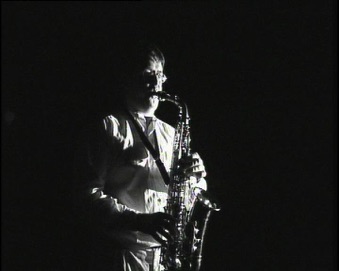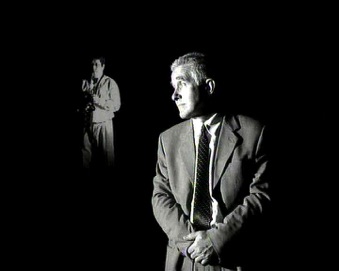Noiristical
Screenings / Exhibitions
• Kent International Film Festival (Oct 1999)
• MikrokinoFEST, Belgrade, Yugoslavia (Feb 2001)
• Renewal 1968/2004. Sidney Cooper Gallery, Canterbury (May-March 2004)
Noiristical is an audiovisual construction that starts with the question: what would happen if film noir was fed into the sound machine ? What happens when style is styled, if folds are folded ? Noiristical is an attempt to noir the sounds of film noir.
According to Deleuze, the Baroque refers not to an essence but rather to an operative function, to a trait. It endlessly produces folds. Dead right. People will tell you film noir is a genre or style. Dead wrong. Noir is a machine - a Baroque machine for endlessly producing folds. The noir machine twists and turns its folds, fold over fold, one upon the other to infinity. The noir fold would unfurl uninterestingly to infinity (and beyond).
The Noiristical machine needed to be pump primed, in this case with sounds from a mythical 'jazz workshop.' The piece opens with a Nancarrowesque folding together of three separate recordings - tenor sax, drums and guitar. But it is the drum to which we constantly return as the insistent territorial refrain of the urban soundscape - we hear it daily through walls, or issuing from automobiles.
Inside the music, drumming is a call to arms, the rhythmic thread pulling the group together to work for the collective good. Outside the music, it betrays the other aspect of its military associations - the threat of violence, the threat of sex, the threat of the other, the threat of the wild. Noiristical mixes these sounds with recollections of an iconic jazz musician’s first encounters with drugs, suggestions of a massacre, clumsy Freudian fumblings with locks and keys, echoing corridors, French chique and the masturbatory enthusiasms of a cinephile film director. Police calls culled from the air are a sample of the daily dramatic performances that enact the naked city dreamscape. Old friends call to recollect people and moustaches from the past.
As an Anexactetude, the piece draws some inspiration from Deleuze's concept of the anexact - something which is neither exact, nor inexact, but precisely anexact. It is sound, perhaps more than any other sense, that permanently and precisely occupies the creative world of the anexact.


